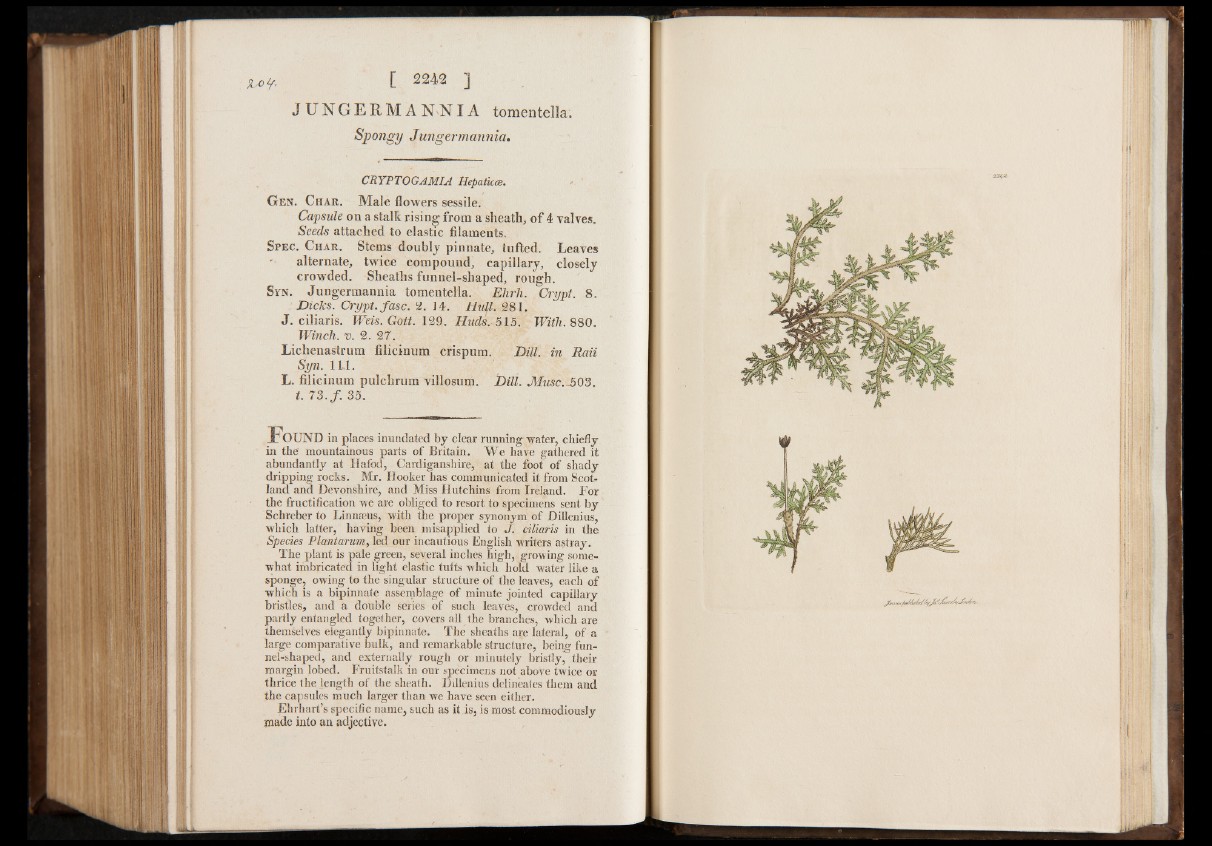
M [ 2242 ]
J U N G E R M A N N I A tomentella.
Spongy Jungermannia.
CRYPTOGAMIA Hepaticce.
G e n . C h a r . M a l e flow e rs se ssile.
Capsule o n a s ta lk r i s in g f rom a s h e a th , o f 4 v a lv e s.
Seeds a t t a c h e d to e la s tic filam e n ts .
S p e c . C h a r . S tem s d o u b ly p in n a t e , tu f te d . L e a v e s
a l te r n a t e , tw ic e c o m p o u n d , c a p i l l a r y , c lo s e ly
c r o w d e d . S h e a th s f u n n e l - s h a p e d , r o u g h .
Syn. J u n g e rm a n n i a tom e n te lla . Ehrh. Crypt. 8.
Dicks. Crypt, fasc. 2. 14. H ull. 281.
J . ciliaris. Weis. Gott. 129. Huds. 515. With. 880.
Winch, v. 2. 27.
L i c h e n a s t r u m f ilic in u m c r is p um . Dill, in Raii
Syn. 1L1.
L . f ilic in u m p u l c l i r u m v illo s um . Dill. Muse. .503.
t. 73. f . 35.
F o u n d in places inundated by clear running water, chiefly
in the mountainous parts of Britain. W e have gathered it
abundantly at Hafod, Cardiganshire, at the foot of shady
dripping rocks. Mr. Hooker has communicated it from Scotland
and Devonshire, and Miss Hutchins from Ireland. For
the fructification we are obliged to resort to specimens sent by
Schreber to Linnaeus, with the proper synonym of Dillenius,
which latter, having been misapplied to «7. ciliaris in the
Species Plantarum, led our incautious English writers astray.
The plant is pale green, several inches high, growing somewhat
imbricated in light elastic tufts which hold water like a
sponge, owing to the singular structure of the leaves, each of
which is a bipinnate assemblage of minute jointed capillary
bristles, and a double series of such leaves, crowded and
partly entangled together, covers all the branches, which are
themselves elegantly bipinnate. The sheaths are lateral, of a
large comparative bulk, and remarkable structure, being funnel
shaped, and externally rough or minutely bristly, their
margin lobed. Fruitstalk in our specimens not above twice or
thrice the length of the sheath. Dillenius delineates them and
the capsules much larger than we have seen either.
Ehrhart’s specific name, such as it is, is most commodiously
made into an adjective.